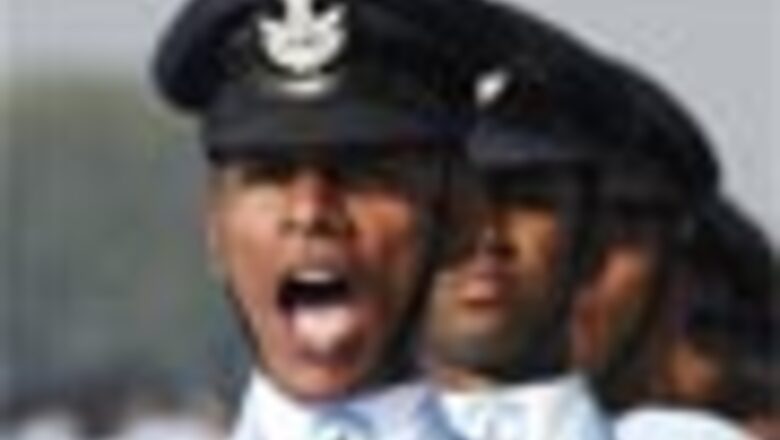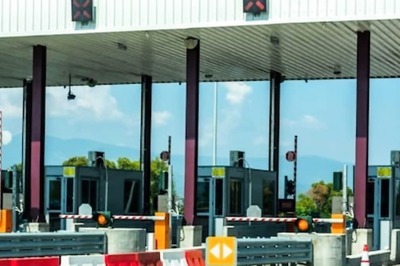
views
New Delhi: The IAF has got the government's permission to fire back at Naxals in extremist-hit areas in self-defence, highly-placed Air Force sources said on Thursday.
The government's nod to the IAF's request made in September last year comes at a time when a debate is raging on whether India should use its armed forces against left-wing extremists, whom Prime Minister Manmohan Singh has described as the gravest internal security threat.
The IAF currently deploys two of its Mi-17s and two Dhruv helicopters in anti-Naxal operations. It had lost one of its personnel when a helicopter ferrying election officials and material during the Chhattisgarh Assembly polls was fired at by suspected Naxals a couple of years ago.
The government had given permission to the IAF to defend itself from the extremists' fire and had laid out conditions on the use of small arms in self-defence sometime in October-November last year.
Consequently, the IAF has fitted sideward-mounted machine guns on its helicopters flying in Naxal-affected areas basically for logistics, personnel transport and casualty evacuation of paramilitary forces engaged in fighting the Maoists, the sources said.
These guns would be operated by IAF commandos belonging to Garud units, who would be on board the helicopters every time they go out on sorties, the sources said.
Defence Minister AK Antony had told Parliament in November last year that though no offensive military action had been envisaged while using the IAF helicopters in anti-Naxal operations, there was no specific approval required for action in self-defence.
However, the IAF has proposed a draft 'Rules of Engagement' to regulate such action, in order to avoid any ambiguity and damage to the helicopters or injury to their occupants, he had said replying to members' questions.
Among the conditions laid out were that no indiscriminate firing should be carried out and that the Garuds should be sure of the source of the attack on the helicopters before retaliatory fire was unleashed.
These guidelines were issued to ensure there were no civilian causalities in case the IAF used its guns in self-defence, the Defence Ministry had explained then.
"The IAF helicopter crew will not use the conventional heavy fire power weapons such as rockets and other guns on board, but only the sideward-mounted machine guns. They will use the weapons only if fired upon," the sources said.
"Fortunately, in these months that we have been allowed to defend our assets, there has been no occasion when we had to use the sideward-mounted guns," they said.
The IAF, the sources said, had obtained the government's approval recently to withdraw 17 of its Mi-17 helicopters that are currently in operation with various UN missions.
Once the number of its helicopters increased, it could think of sparing more choppers for the paramilitary forces that were combating the Maoists after assessing the situation, the sources said.
They said for the use of its helicopters in Maoist-hit areas, the IAF had asked the state police and the paramilitary to take a number of precautions such as sanitising the helipad areas.
"If the Naxals have rockets, as it is being suggested, the security forces would sanitise the area up to the range of these rockets, be it 600 metres or more, from the helipads," the sources said.
Admitting that the IAF had imposed an 80-hour per month per helicopter limit for flying, they said it had, in fact, done more hour-sorties in the last four months than the prescribed limit.
The helicopters had done an average of 169 hours in April, 91 hours in May, 118 hours in June and 89 hours in July this year, they said, denying media reports that the IAF had refused to fly in the Naxal-affected regions during certain operations recently.
They said the time limit was set as per IAF's norms for all its helicopters, keeping in mind the maintenance and repairs required for these machines after they had flown for a specified number of hours.
It was also to have a certain number of platforms available for operations at any given time.
"In case of a crisis, like the Leh cloudburst, there is no question of IAF helicopters being denied, so let's not get into a blame game," the sources said.
On the question of paramilitary forces wanting a separate air wing for themselves, the sources said the issue of operating an aircraft or a helicopter fleet was "complicated and not simplistic" as it sounded.
They said an air fleet required a large supply chain for spares, support systems and other logistics, which was not an easy task.
"Some state governments bought helicopters but found it difficult to operate them due to the lack of support systems," they said.




















Comments
0 comment